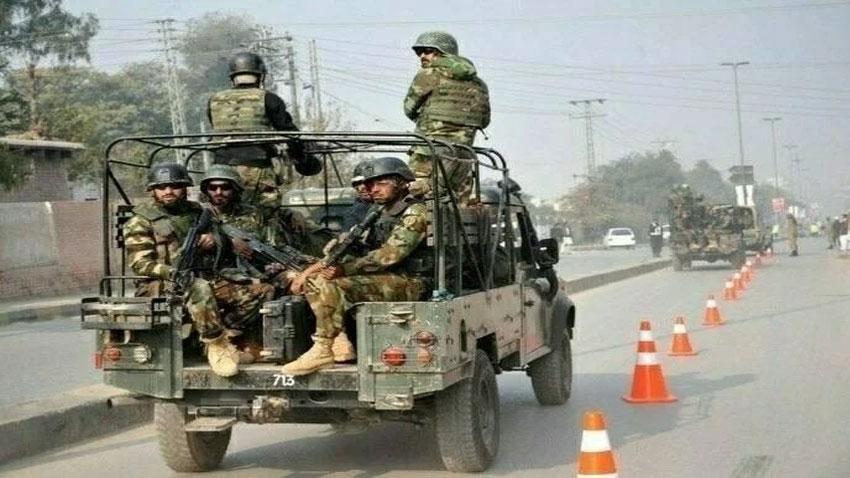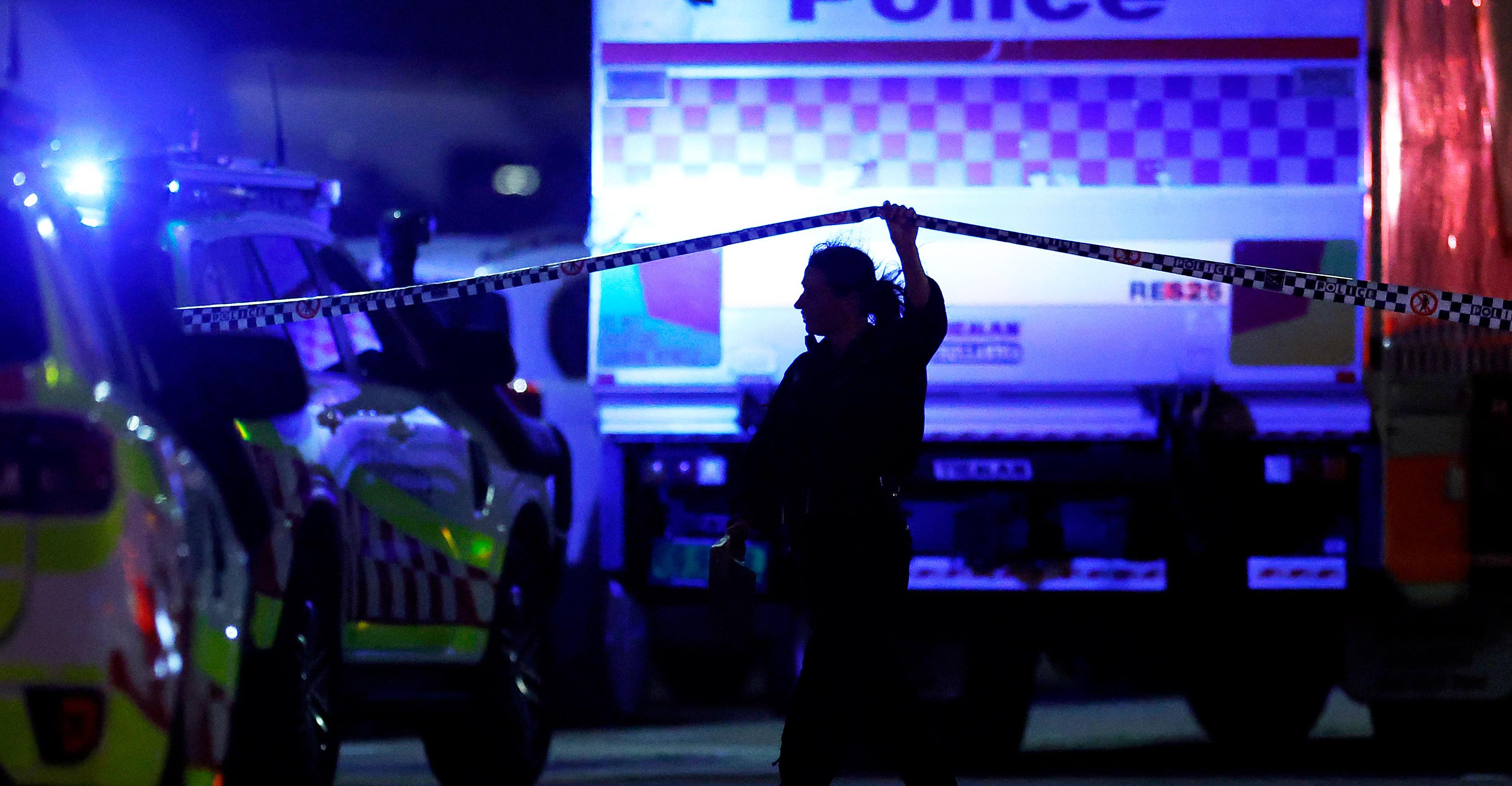People might be still trapped under debris in Morocco. Here’s how they could be saved.


At least 2,600 people have been confirmed dead in the aftermath of a magnitude 6.8 earthquake that struck Morocco on Friday, making it the deadliest tremor in the country in more than six decades. Thousands more have been injured, and hundreds of thousands have been displaced or affected by the disaster, according to the WHO.
There’s a world-spanning network of people trained to deploy to disasters in situations like this, and multiple countries have offered to send aid and first responders. Morocco has so far accepted help from Spain, the United Kingdom, Qatar, and the United Arab Emirates; rescuers from those countries are deploying to help with relief efforts, and more will deploy from other countries if Morocco asks for it.
Disasters like earthquakes bring unique logistical and medical challenges for first responders. There are no current estimates for the number of people missing, per Reuters, but the clock is ticking to find people who still might be trapped under rubble and fallen buildings.
Earlier this year, Vox spoke with two search-and-rescue experts to learn how earthquake rescues work.
The most important thing they stressed: These days immediately after the quake are the most critical.
“Of course, the survivability diminishes as the days go on, but we’re always hopeful,” said Frank Infante, a battalion chief in the County of Los Angeles Fire Department who was deployed to Adiyaman, a city in southeastern Turkey, when earthquakes struck that country in February. “In Haiti [after the earthquake that hit in 2010] we found people 10 days later. I don’t think there is a hard number. There is hope, and we continue our life-saving efforts.”
Still, it is a challenge to find those people. Every earthquake disaster poses its own challenges. But here’s what typically happens to ensure as many people make it out of the wreckage alive as possible.
The crucial first step: Coordination
Deploying a search-and-rescue team in the aftermath of a disaster like an earthquake is complicated. Teams have to be essentially self-sufficient for about three weeks; when Infante deployed to Turkey, the combined USAID team took 150,000 pounds of supplies such as generators, tools, living spaces, and water purification equipment; all they needed was access to water, fuel, and lumber for constructing structural supports.
Earthquake search-and-rescue teams are made up of experts with wide-ranging expertise: There are doctors and EMTs, structural engineers, logisticians, hazardous materials specialists, rescue dogs and their handlers, heavy riggers who usually work in the construction industry, information officers, and more. The two American teams that deploy to earthquakes around the world — one from Los Angeles County, California, and one from Fairfax County, Virginia — are both units of fire departments, and they often form a combined team operating under USAID, the federal government’s international aid agency. (These teams haven’t deployed to Morocco yet, but Reuters reports a small team of disaster experts from the US is on the ground to assess the situation.)
Once teams arrive on the ground, they work with local governments to figure out what the scale of the destruction is, and to discuss how their skills can best be put to use. Using tools like drones and simply by driving and walking around, they map out the destruction and try to figure out where survivors are most likely to be found. Then, alongside local first responders and volunteers, the teams get down to the hard, up-close work of finding people under the rubble.
Searching for void spaces is key
The epicenter of the earthquake in Morocco was located in the High Atlas mountains, about 45 miles southwest of Marrakesh, one of Morocco’s largest and oldest cities. Many of the buildings in the villages of the High Atlas mountains were traditionally made with mud bricks. When the earthquake hit, the New York Times reports, these bricks essentially crumbled into piles of sand. In Marrakesh, which is tightly packed with buildings and people, historic buildings were damaged but many more modern buildings seem to be relatively unscathed.
Whether people survive, and how long, depends greatly on what a building is made out of.
After a disaster hits, “structural engineers assess a building looking for what we call survivable void spaces,” said Joseph Barbera, a professor at the George Washington University Institute for Crisis, Disaster, and Risk Management and emergency physician who has deployed on past earthquake responses.
Those void spaces are where a person under the rubble might have found air to breathe; in buildings made of reinforced concrete, void spaces are often created in the gaps between pieces of rubble.
But in Morocco, the void-space situation might be different. Reuters reports that the mud brick, stone, and wood used to build the traditional houses in the High Atlas mountains are more likely to crumble, filling in any voids and burying the people trapped inside them.
Rescue teams use a number of tools to find void spaces, like listening devices that can magnify sounds from survivors or cameras that might be able to see through cracks in the rubble (infrared cameras aren’t very useful in many cities because of the large amount of reinforced concrete, which masks heat signatures).
Sometimes, survivors can even use their phones to call or text for help, although this can cause confusion of its own: if cell towers go down during an earthquake, text messages could be delayed for hours or even days, making it unclear if someone may still be alive.
But the most important tools, Infante said, aren’t technological marvels: they’re the dogs that have been specially trained to navigate through the rubble and sniff out survivors.
Earthquake rescues are often about triage — focusing resources where they’d be the most likely to successfully extract survivors. The same goes for the dogs, which are deployed to wherever there are reliable reports of survivors in a building, such as people yelling for help or banging on pipes or rubble to get bystanders’ attention.
Just like the humans on the ground, the dogs are specially trained to walk on unstable surfaces. Once the dogs indicate they’ve found survivors, the rescuers get to work on extraction.
Extraction is delicate, deliberate work
Getting survivors out from underneath collapsed buildings comes with a whole raft of dangers. First, hazardous materials specialists and structural engineers assess whether rescuers can even safely attempt an extraction. If there is a risk of further collapse, the teams might first work on building structural supports with lumber so rescue teams don’t accidentally trap themselves or the people they’re trying to get out.
Once they’re given the all-clear, rescuers then start breaking through the rubble using hand tools like rotary saws, picks, and sledgehammers — heavy machinery runs the risk of shifting too much rubble at once, which could compromise void spaces.
“It’s very surgical, it’s very methodical,” Infante said. “If they’re in a nice void space, we don’t want a piece of concrete to fall on top of them.”
When they reach a survivor, rescue teams sometimes have to start providing medical care even before they’ve been extracted from the building. Survivors have often spent hours with parts of their bodies stuck under rubble, and people who have crush injuries run the risk of developing crush syndrome, which can cause organ failure throughout the body within minutes of extraction.
Crush syndrome is sneakily deadly — and easy to miss — because it only sets in once the object crushing the person is lifted from the body. Removing the object suddenly allows blood to flow into and out of the victim’s extremities, and that sudden back-and-forth flood of oxygen and toxins can overwhelm the body, particularly the kidneys. If a person with crush syndrome doesn’t receive immediate medical attention, they can come out of a building seeming fine, even smiling and talking to their rescuers, only to quickly deteriorate and even die.
A collapsed building is, obviously, very different from an emergency room, and the rescuers must adapt accordingly. To prevent crush syndrome, they have to administer IVs before releasing crushed body parts from under rubble, and since they’re working in cramped spaces they have to set up IV bags differently than they would in a hospital. Instead of letting gravity do the work, for example, they use IV bags equipped with pressure infusers to keep the liquid flowing. Once that’s done, the weight can be lifted off the survivor and they can be extracted, where they might get further treatment like emergency dialysis.
There is no timeline on hope
Rescuers are still searching for survivors in Morocco, and they will keep working with local volunteers and first responders to find survivors for as long as they’re told to; it’s up to the Moroccan government to tell them when to stop looking, and whether or not to shift the focus of their search to bodies. Until then, their mandate remains clear: keep looking.
For Infante and Barbera, their deployments to earthquake rescues over the years are sobering reminders of the unpredictability of earthquakes and the very real possibilities of what can happen at home. LA County is, famously, located on a major fault line, and while Infante and his colleagues hope they would never have to use their skills at home, they know they will be ready — and that help will arrive.
“It’s really important that we can transcend the geopolitical stuff and just show up and help,” Barbera said. “It’s an important part of humanity.”
PM Shehbaz stresses use of modern technology to curb human trafficking
- a day ago
Bangladesh holds state funeral for slain youth leader amid tight security
- a day ago
Only state can declare jihad in Islamic country, says COAS Syed Asim Munir
- 7 hours ago
Green Shirts give India humiliating defeat in U-19 Asia Cup final
- 7 hours ago
Gazans mourn six killed in Israeli shelling on shelter
- a day ago
Thai border clashes displace over half a million in Cambodia
- 7 hours ago
Commissioning ceremony of 2nd Pak Navy Ship KHAIBAR held in Turkiye
- 7 hours ago
Death anniversary of Hafeez Jalandhari being observed today
- 7 hours ago

Nine terrorists neutralised in two KP IBOs: ISPR
- 2 hours ago
Third ‘Avatar’ film lights up global box offices
- 2 hours ago

PDMA issues alert about rains, snowfall over hills in KP
- a day ago
May 9: Yasmin Rashid, Mahmoodur Rashid, others sentenced to 10 years’ imprisonment each in two more cases
- a day ago












